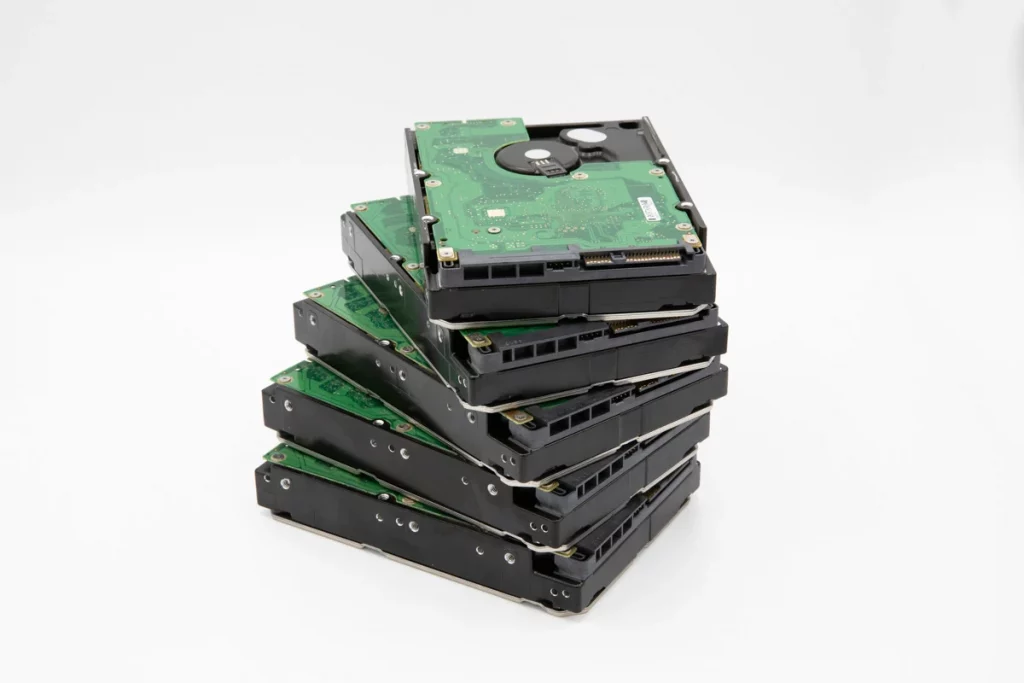In the world of data storage, JBOD, short for “Just a Bunch Of Disks,” is a storage architecture that offers a simple and cost-effective solution for expanding storage capacity. It is a popular choice among individuals and organizations looking to increase their storage capacity without investing in complex and expensive storage systems.
In this blog post, we will delve into the concept of JBOD, discuss its advantages and disadvantages, and explore some common causes for data loss that can occur on these systems.
Understanding JBOD
JBOD refers to a storage configuration that combines multiple physical hard disk drives (HDDs) into a single logical unit. Unlike other RAID configurations that offer data redundancy and fault tolerance, JBOD operates as a simple aggregation of disks, treating them as independent drives without any striping or mirroring techniques.
Advantages of JBOD
Cost-Effectiveness
One of the significant advantages of JBOD is its cost-effectiveness. By utilizing individual drives instead of complex RAID setups, users can significantly reduce the overall cost of storage expansion.
Flexibility
JBOD allows for flexible storage management. Users can add or remove drives from the array easily, making it suitable for environments where storage requirements frequently change.
Easy Implementation
Setting up a JBOD configuration is relatively straightforward, making it accessible even to users with limited technical knowledge. No complex configurations or software management is required.
Maximum Capacity Utilization
JBOD provides users with the ability to utilize the full capacity of each drive, eliminating the overhead of data redundancy.
Disadvantages of JBOD
Lack of Redundancy
One of the most notable drawbacks of JBOD is the absence of data redundancy. Since it treats each disk independently, a failure of a single drive can result in the loss of data stored on that particular drive.
No Performance Improvement
JBOD does not provide any performance benefits over a single disk. It does not utilize striping or mirroring techniques, limiting its performance to that of individual drives.
Lack of Centralized Management
JBOD configurations lack centralized management capabilities, making it challenging to monitor and control storage resources effectively.

Increased Vulnerability
Due to the lack of redundancy, JBOD systems are more vulnerable to data loss caused by disk failures. The failure of a single drive can render the entire array inaccessible.
Common Causes for Data Loss on JBOD
While JBOD offers simplicity and cost-effectiveness, it also comes with certain risks and vulnerabilities that can lead to data loss. Here are some common causes for data loss on these systems:
Drive Failure
The failure of a single drive in an array can lead to data loss. As JBOD lacks redundancy, there is no data protection mechanism in place to recover data from a failed drive.
Human Error
Accidental deletion or formatting of a drive within a configuration can result in the loss of critical data. Users must exercise caution when managing JBOD arrays.
Power Failures
Power surges or sudden power outages can cause severe data corruption or drive failures, leading to data loss on these systems.
Data Corruption
These arrays are not immune to data corruption. Corruption can occur due to various reasons, such as software bugs, OS issues, or disk errors.
Data Recovery from JBOD Storage with RAID Recovery Services
We understand the importance of data and the potential risks associated with JBOD configurations. We specialize in providing data recovery services for JBOD systems, ensuring that your data is recovered safely and efficiently.
Our team of highly skilled data recovery experts has extensive experience with various storage architectures. We have the necessary tools, expertise, and state-of-the-art facilities to perform successful data recoveries from these arrays.
50+ Offices and Drop-off Points
24/7 Available Emergency Services
Overall 99% Recovery Success Rate
ISO Certified Class 10 Cleanroom
Flexible Recovery Service Options
Risk-free Diagnostics and Evaluation
At RAID Recovery Services, we recognize the unique challenges and risks involved in data recovery. With our team of skilled professionals, state-of-the-art facilities, and advanced data recovery techniques, we are well-equipped to handle data loss situations on JBOD arrays.
Trust us to recover your critical data, ensuring minimal downtime and maximum data retrieval success. Contact us today to learn more about our JBOD data recovery services and how we can assist you in recovering your valuable data.
Frequently Asked Questions
What types of configurations do you support?
We support a wide range of configurations, including various drive types (HDDs and SSDs) and interfaces (SATA, SAS, etc.). Our expertise extends to different file systems and operating systems commonly used in JBOD setups, such as NTFS, HFS+, and EXT.
What are the common causes of JBOD data loss?
JBOD data loss can occur due to various reasons, including drive failures, accidental deletion or formatting, power surges or outages, and data corruption. Our data recovery experts are well-versed in identifying the causes of data loss and employing the appropriate recovery techniques accordingly.
Can you recover data from a failed JBOD drive?
Yes, at RAID Recovery Services, we specialize in recovering data from failed JBOD drives. Our experienced technicians employ advanced techniques and tools to retrieve data from physically damaged or logically corrupted drives within the array.
How long does the JBOD data recovery process take?
JBOD data recovery time varies based on data loss complexity and drive damage. Our team offers an estimated timeframe after assessing the situation, aiming for a swift recovery without compromising data integrity.
Is it possible to recover data from a JBOD system with multiple failed drives?
Recovering data from a JBOD system with multiple failed drives can be challenging, but it is not impossible. Our team of experts will assess the situation, examine the extent of damage, and determine the feasibility of data recovery. In some cases, we may need to perform component-level repairs or utilize specialized techniques to recover as much data as possible.
Related Blogs

